Characterization of SfmD as a Heme peroxidase that catalyzes the regioselective hydroxylation of 3-methyltyrosine to 3-hydroxy-5-methyltyrosine in saframycin A biosynthesis
- PMID: 22187429
- PMCID: PMC3281660
- DOI: 10.1074/jbc.M111.306316
Characterization of SfmD as a Heme peroxidase that catalyzes the regioselective hydroxylation of 3-methyltyrosine to 3-hydroxy-5-methyltyrosine in saframycin A biosynthesis
Abstract
Saframycin A (SFM-A) is a potent antitumor antibiotic that belongs to the tetrahydroisoquinoline family. Biosynthetic studies have revealed that its unique pentacyclic core structure is derived from alanine, glycine, and non-proteinogenic amino acid 3-hydroxy-5-methyl-O-methyltyrosine (3-OH-5-Me-OMe-Tyr). SfmD, a hypothetical protein in the biosynthetic pathway of SFM-A, was hypothesized to be responsible for the generation of the 3-hydroxy group of 3-OH-5-Me-OMe-Tyr based on previously heterologous expression results. We now report the in vitro characterization of SfmD as a novel heme-containing peroxidase that catalyzes the hydroxylation of 3-methyltyrosine to 3-hydroxy-5-methyltyrosine using hydrogen peroxide as the oxidant. In addition, we elucidated the biosynthetic pathway of 3-OH-5-Me-OMe-Tyr by kinetic studies of SfmD in combination with biochemical assays of SfmM2, a methyltransferase within the same pathway. Furthermore, SacD, a counterpart of SfmD involved in safracin B biosynthesis, was also characterized as a heme-containing peroxidase, suggesting that SfmD-like heme-containing peroxidases may be commonly involved in the biosynthesis of SFM-A and its analogs. Finally, we found that the conserved motif HXXXC is crucial for heme binding using comparative UV-Vis and Magnetic Circular Dichroism (MCD) spectra studies of SfmD wild-type and mutants. Together, these findings expand the category of heme-containing peroxidases and set the stage for further mechanistic studies. In addition, this study has critical implications for delineating the biosynthetic pathway of other related tetrahydroisoquinoline family members.
Figures

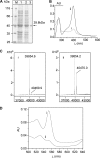
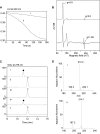
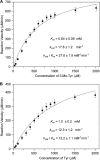
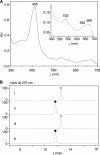

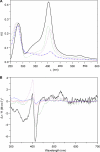
Similar articles
-
A novel catalytic heme cofactor in SfmD with a single thioether bond and a bis-His ligand set revealed by a de novo crystal structural and spectroscopic study.Chem Sci. 2021 Jan 22;12(11):3984-3998. doi: 10.1039/d0sc06369j. Chem Sci. 2021. PMID: 34163669 Free PMC article.
-
Biosynthesis of 3-hydroxy-5-methyl-o-methyltyrosine in the saframycin/ safracin biosynthetic pathway.J Microbiol Biotechnol. 2009 May;19(5):439-46. doi: 10.4014/jmb.0808.484. J Microbiol Biotechnol. 2009. PMID: 19494690
-
YhjA - An Escherichia coli trihemic enzyme with quinol peroxidase activity.Biochim Biophys Acta Bioenerg. 2018 Jun;1859(6):411-422. doi: 10.1016/j.bbabio.2018.03.008. Epub 2018 Mar 14. Biochim Biophys Acta Bioenerg. 2018. PMID: 29550214
-
Vital roles of an interhelical insertion in catalase-peroxidase bifunctionality.Biochem Biophys Res Commun. 2004 Jun 11;318(4):970-6. doi: 10.1016/j.bbrc.2004.04.130. Biochem Biophys Res Commun. 2004. PMID: 15147967
-
Biosynthesis of human myeloperoxidase.Arch Biochem Biophys. 2018 Mar 15;642:1-9. doi: 10.1016/j.abb.2018.02.001. Epub 2018 Feb 3. Arch Biochem Biophys. 2018. PMID: 29408362 Free PMC article. Review.
Cited by
-
A novel catalytic heme cofactor in SfmD with a single thioether bond and a bis-His ligand set revealed by a de novo crystal structural and spectroscopic study.Chem Sci. 2021 Jan 22;12(11):3984-3998. doi: 10.1039/d0sc06369j. Chem Sci. 2021. PMID: 34163669 Free PMC article.
-
Combined spectroscopic and structural approaches to explore the mechanism of histidine-ligated heme-dependent aromatic oxygenases.Methods Enzymol. 2023;685:405-432. doi: 10.1016/bs.mie.2023.03.008. Epub 2023 May 2. Methods Enzymol. 2023. PMID: 37245909 Free PMC article.
-
Recent developments in the use of peroxygenases - Exploring their high potential in selective oxyfunctionalisations.Biotechnol Adv. 2021 Nov 1;51:107615. doi: 10.1016/j.biotechadv.2020.107615. Epub 2020 Aug 19. Biotechnol Adv. 2021. PMID: 32827669 Free PMC article. Review.
-
The β-subunit of tryptophan synthase is a latent tyrosine synthase.Nat Chem Biol. 2024 Aug;20(8):1086-1093. doi: 10.1038/s41589-024-01619-z. Epub 2024 May 14. Nat Chem Biol. 2024. PMID: 38744987 Free PMC article.
-
Lincomycin biosynthesis involves a tyrosine hydroxylating heme protein of an unusual enzyme family.PLoS One. 2013 Dec 4;8(12):e79974. doi: 10.1371/journal.pone.0079974. eCollection 2013. PLoS One. 2013. PMID: 24324587 Free PMC article.
References
-
- Scott J. D., Williams R. M. (2002) Chemistry and biology of the tetrahydroisoquinoline antitumor antibiotics. Chem. Rev. 102, 1669–1730 - PubMed
-
- Arai T., Takahashi K., Kubo A. (1977) New antibiotics saframycins A, B, C, D, and E. J. Antibiot. 30, 1015–1018 - PubMed
-
- Cuevas C., Francesch A. (2009) Development of Yondelis (trabectedin, ET-743). A semisynthetic process solves the supply problem. Nat. Prod. Rep. 26, 322–337 - PubMed
-
- Mikami Y., Takahashi K., Yazawa K., Arai T., Namikoshi M., Iwasaki S., Okuda S. (1985) Biosynthetic studies on saframycin A, a quinone antitumor antibiotic produced by Streptomyces lavendulae. J. Biol. Chem. 260, 344–348 - PubMed
-
- Palaniswamy V. A., Gould S. J. (1986) The incorporation of 3′-methyltyrosine and 5′-methyl DOPA into naphthyridinomycin. J. Am. Chem. Soc. 108, 5651–5652
Publication types
MeSH terms
Substances
LinkOut - more resources
Full Text Sources
Other Literature Sources
Molecular Biology Databases

